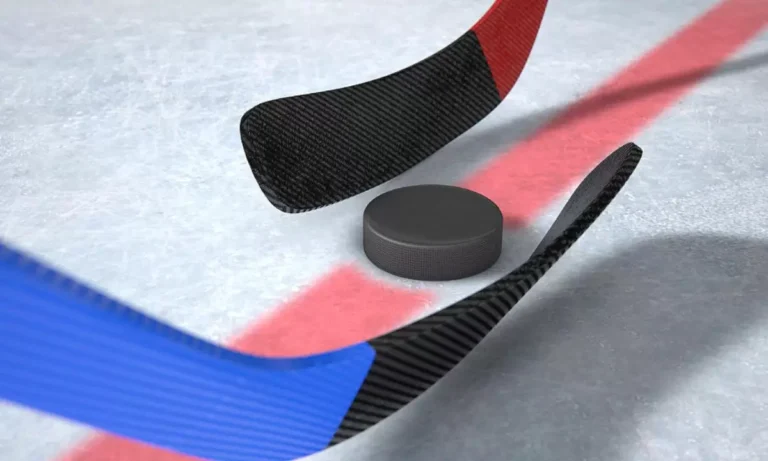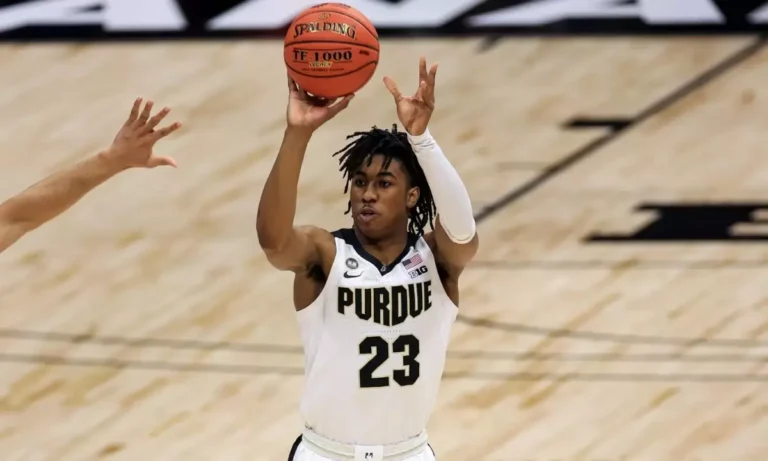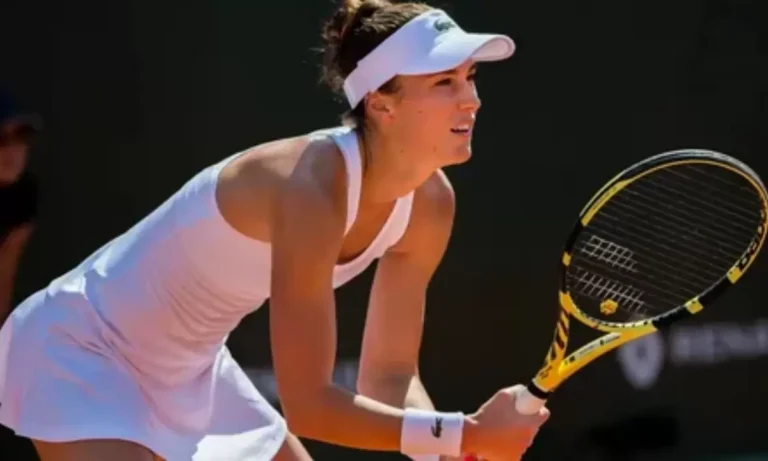How Many Periods In Hockey? The Best Hockey Game Info Guide
Hockey is a fast-paced, action-packed sport enjoyed by millions of fans worldwide. A standard hockey game consists of 3 periods, each 20 minutes long for a total regulation time of 60 minutes. This 3-period structure has been used for over 100 years at all competitive levels of the game. It provides time for high intensity action while also allowing player recovery between shifts.
Periods are separated by intermissions to maintain high-quality ice. Some lower level amateur leagues may adjust periods but the core 3-period concept remains. Overtime rules extend games if needed to determine a winner. This comprehensive guide will explain all aspects of periods in hockey from the grassroots to elite level.
Understanding Hockey Basics
Hockey has a long and storied history dating back over a century. While the basic concepts of skating, stickhandling, and shooting a puck into a net remain, the sport has modernized over the decades to suit evolving player abilities and fan preferences. Getting acquainted with fundamental elements lays the foundation for a deeper appreciation of strategy, drama, and nuance at the game’s highest echelons.
Ice Hockey vs. Other Sports
Hockey is unique among major North American professional sports in several distinct ways. Players require specialized ice skates and protective equipment due to the frozen playing surface. Infractions are penalized by referees via temporary player exclusions rather than stopping the game’s clock. Overtime and tiebreaking rules also differ from sports utilizing halves or quarters.
How Many Periods Are in a Hockey Game?
Understanding the periodic format of hockey games provides crucial context for fans both casual and diehard. The structure consistently balances competing teams and influences strategic approaches.
Professional Hockey Games
At the highest professional levels of the NHL, AHL and abroad, contests strictly adhere to division into three periods. Each lasts 20 minutes for a total regulation time of 60 minutes, barring overtime or shootouts to decide close scores.
Amateur Games
Recreational and youth leagues sometimes tweak the structure to fit facilities or age groups. Periods may shorten to 15-17 minutes each within a two hour maximum ice slot. Less serious adult divisions occasionally use two longer halves versus three stages.
Like This Post: Penn State Basketball
The Structure of the Game
At its core, hockey follows a three-period format established in the early 20th century.
The Standard Three-Period Structure
Through a century of evolution, the periodic framework crystallized into three 20-minute sessions providing optimal rest between shifting momentum. This tested design engages viewers nearly three hours including breaks between regulation and potential extras.
Length of Each Period
With precisely 20 minutes on the clock, periods in hockey deliver continuous excitement while allowing recoveries. Though play remains fluid, stops for whistles, penalties and goals lengthen real game time approximately 45 minutes per portion.
Periods and Game Flow
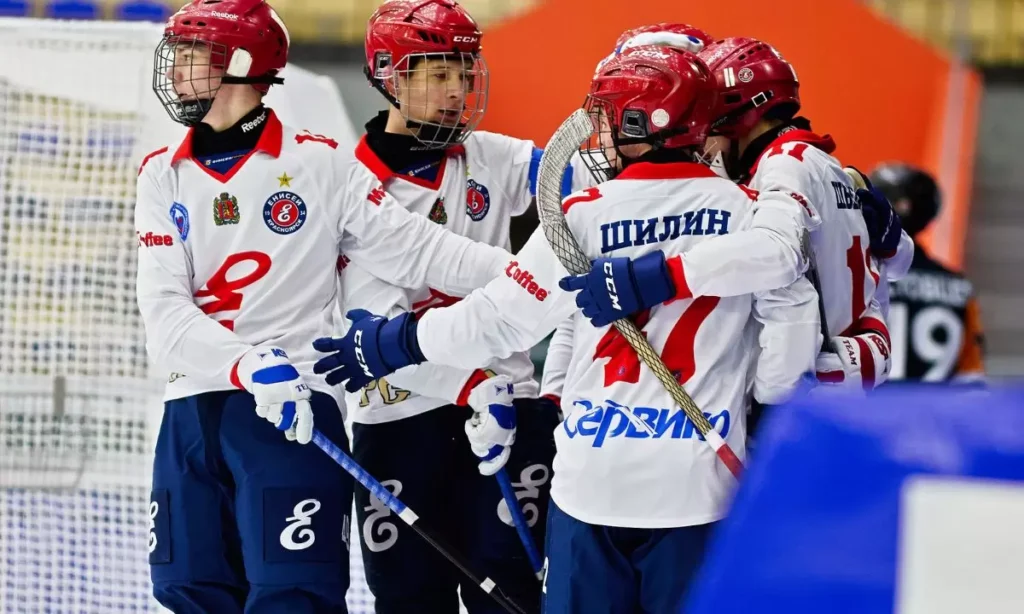
The periodic structure of hockey games facilitates strategic adjustments and recovery periods in hockey that influence outcomes. Proper understanding of timing rules enhances fans’ enjoyment and knowledge of the sport.
Duration of Periods and Intermissions
In the NHL, periods last 20 minutes per the standard format adopted in 1910. This duration balances constant motion with respites for rehydrating and catching breaths.
The 18-minute intermissions between stages allow vital ice resurfacing to prevent dangerous ruts and chips from hindering play. Players also analyze gameplay footage and receive medical attention if needed from team physicians and trainers. Coaches discuss substitutions and tactics with assistants to optimize subsequent periods in hockey.
Stoppages and Timeouts
Whistle stoppages pause the clock for moments like penalties, offsides, icings, and goals. On average, only about 40-45 total minutes is spent actively competing per period once accounting for these interruptions.
Each team also retains one 30-second timeout to call per regulation game. Coaches tactically use these pauses, typically in the second or third periods, for crucial strategic discussions without losing line matchups.
Impact of Periods on Player Strategy
The periodic structure inherently influences in-game approaches. As lungs and limbs fatigue, fourth line grinders receive more shifts while stars catch their breath. Leading groups may play conservatively to protect advantages instead of chasing more goals.
With half the contest already decides, teams tied late will unleash ultimatums like pulling the goalie. Those behind enter high-risk, high-reward mode willing to sacrifice defense for desperate offensives. Coaches adeptly adapting rosters and schemes to periods in hockey gain significant strategic benefits.
Special Game Conditions
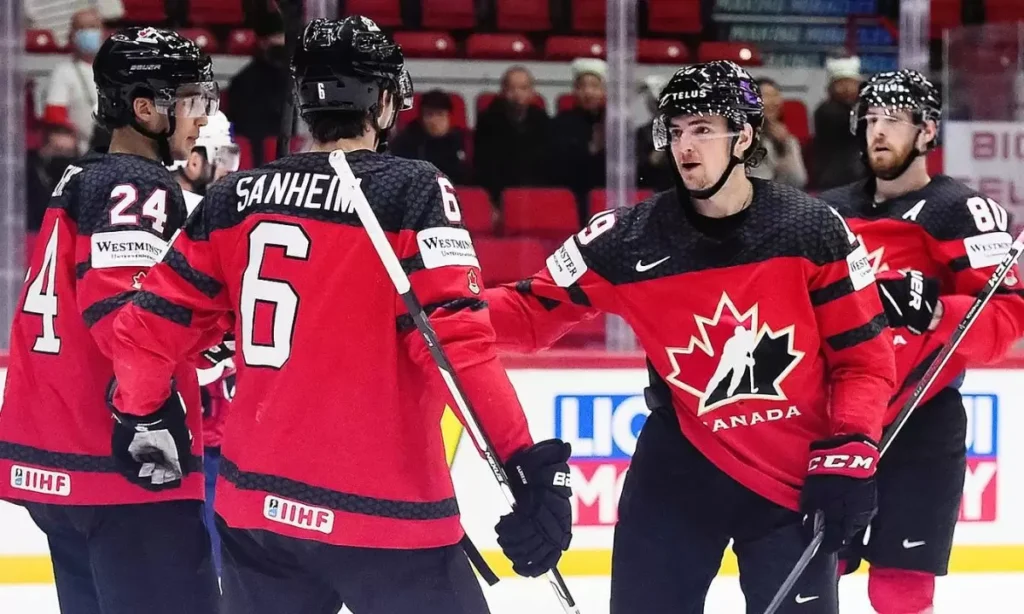
To resolve tied scores, hockey employs dramatic overtime periods and shootouts that can elevate heart rates for players and fans alike. Infractions also strategically shift bench advantages during crucial power plays.
Overtime and Sudden Death
Should 60 minutes fail to decide a winner, in the NHL regular season teams face off for another 5 minutes using only 3 skaters in sudden-death format. Whomever scores first ends the game.
During playoffs, continuous 20-minute overtime periods in hockey ensue at even strength until one side prevails. Tension magnifies under the win-or-go-home pressure of a single mistake deciding a series.
Shootouts and Tiebreakers
If still level after overtime, a shootout commences with each team selecting 3 different shooters. Players challenge the goalie one-on-one, with the most goals winning. Sudden death rounds continue until a conclusive result.
Penalties and Power Plays
Minor infractions like tripping or slashing penalize the offending team by forcing them to defend without the penalized player for a set time. This man advantage allows more space and opportunities for the power play unit to break the deadlock.
Skilled playmakers can exploit these 4-on-5 or 5-on-4 situations with precision passing and shots. Conversely, shorthanded clubs bravely hold fort through spirited penalty killing. Special teams success often influences tight outcomes.
Variations in Hockey Game Length Across Leagues
While the NHL standard is widely emulated, other prominent hockey organizations employ unique periodic and overtime configurations befitting their level of competition and target audiences.
NCAA Hockey
Collegiate games played under the governing NCAA use the standard three 20-minute period structure. However, any 5-minute overtime remains a tie rather than triggering a shootout. Conference playoff and championship matchups switch to continuous sudden-death overtimes instead.
Minor League Hockey
The AHL and ECHL major minor leagues generally mirror the NHL model. Developmental contests last approximately three hours with three 20-minute periods in hockey plus optional overtime and shootouts to settle ties.
Season-ending Calder and Kelly Cup playoff formats follow the extended sudden-death overtime format employed in the NHL postseason rather than ending at a draw. This emulates the urgency and drama of crowned champions rising from elimination-style hockey.
The Longest NHL Games in History
While most matches wrap up within a few hours, history books boast several epic contests stretching deep into the night through multiple overtime periods in hockey.
Top 10 Longest NHL Games
The 1936 marathon between Detroit and Montreal dragged on for over 176 minutes spanning an exhausting six overtimes before conclusion. Other notable gridlock games languished well past the 150-minute mark through five additional periods in hockey.
Battling into the early hours, fatigue fades as adrenaline surges with each close chance potentially ending an endurance test. Fans transfixed at such clutch dramatics earn their playoff price of admission many times over.
Playoff Record Holders
Individual achievement shines within these legendary team slugfests. Keith Primeau retains the single postseason record with four overtime-winning goals in 1999. Joe Sakic leads all skaters with eight career playoff overtime tallies as well.
In net, legends like Patrick Roy compiled over 460 career extra period minutes — tying Martin Brodeur’s league-best 14 playoff overtime wins. Their ability to stem the tide in endless do-or-die scenarios forged reputations as postseason Big Game performers.
Were NHL Hockey games always 3 Periods long?
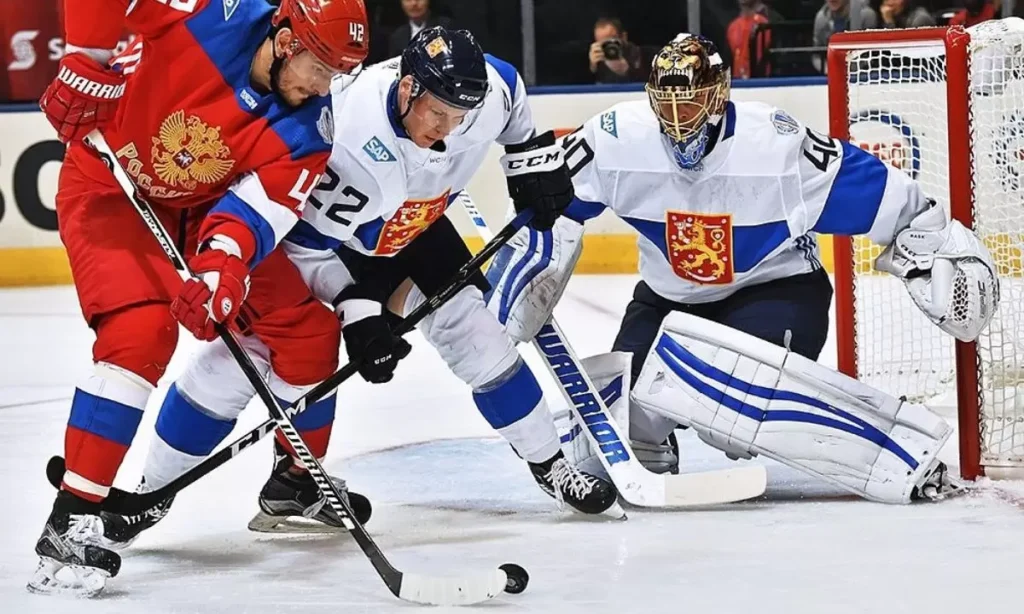
While the standard three-period format seen today has been firmly entrenched for over a century now, the NHL did not always structure games this way. In the early years of the league starting in the 1910-11 season, games were broken into just two periods rather than three.
Each of the two periods back then was 30 minutes in duration, for a total playing time of 60 minutes as it is now. However, the reasons for moving to three shorter periods stemmed from practical concerns over ice conditions as games progressed.
Playing non-stop for 30 minutes at a time, the dense layer of snow buildup on the ice surface would cause challenges. It slowed puck movement and increased chances of slips and falls and more serious leg injuries from blades catching in ruts. The quality of ice inevitably degraded the longer it was used without breaks.
So when the NHL decided to resurface the ice every 20 minutes instead of 30, it necessitated adding that third period. This allowed optimal ice to be maintained throughout matches. The league also found 20-minute shifts to be a more suitable work-rest cycle for the demands of high-intensity NHL hockey.
And thus, the three-period game structure that continues as the standard format found its origins over a century ago. Those periodic breaks for ice maintenance and player recovery have proven essential to protecting safety and competitiveness in the game ever since.
Can a Hockey game last longer than 3 Periods?
While the overwhelming majority of hockey games are decided within the standard three 20-minute regulation periods in hockey, on occasions where the score is tied at the end of the third, provisions are made for additional overtime.
In the NHL regular season, teams play a 5-minute sudden death overtime period with 3 skaters aside to break any ties. Failing that, a shootout occurs.
During playoffs, continuous 20-minute overtime periods at full 5-on-5 strength go on until someone scores to end it. This places extra pressure to score quickly in an elimination game context.
As a result, playoff contests regularly stretch well past the normal 60 minutes into additional sudden death frames. It’s not unheard of for matches to require 4, 5 or even 6 extra periods to settle a winner.
The longest game ever was in 1936 spending a grueling 176 minutes and 30 seconds across 6 overtimes before a victor emerged. Other marathon contests have surpassed the 150-minute threshold as well over numerous additional periods in hockey.
So while three 20-minute stanzas makes the standard regulated timeframe, overtime provisions mean any tied match can indeed continue scaling well into the multiple hours should neither team crack during these nail-biting extended efforts to dodge defeat. For players and fans alike, the jeopardy of extra frames ratchets tension to a heightened degree.
List of hockey games with the most Overtime Periods played
When games remain tied after regulation, overtime periods are played to decide a winner. On rare occasions throughout hockey history, contests have dragged on through an incredible number of additional frames in search of a goal. Here are some of the games that tested player endurance to the maximum limits through multiple overtimes:
- March 24, 1936 – Montreal Maroons vs Detroit Red Wings
- Score: 0-1
- Total game time: 176 minutes and 30 seconds (over 6 periods of overtime)
- April 3, 1933 – Toronto Maple Leafs vs Boston Bruins
- Score: 1-0
- Total game time: 164 minutes and 46 seconds (over 6 periods of OT)
- May 4, 2000 – Pittsburgh Penguins vs Philadelphia Flyers
- Score: 1-2
- Total game time: 152 minutes and 1 second (5 OT periods)
- August 11, 2020 – Tampa Bay Lightning vs Columbus Blue Jackets
- Score: 3-2
- Total game time: 150 minutes and 27 seconds (5 OTs)
- April 24, 2003 – Dallas Stars vs Anaheim Mighty Ducks
- Score: 3-4
- Total game time: 140 minutes and 48 seconds (5 OTs)
How many Periods in a Recreational Hockey game?
At the recreational level in amateur adult leagues, minor variations from the professional three-period model may be utilized depending on facility ice time availability and the nature of the league.
Most commonly, beer league and pickup games will still consist of three periods, usually 15-17 minutes in length each to account for a shorter overall game time of around two hours including breaks.
Some lower-level or non-competitive recreational divisions may opt for two longer periods instead of three to fit more games into a time slot. Periods in these instances tend to be 25-30 minutes each.
Onball hockey variants played outdoors or in non-traditional rinks will naturally modify periods according to surfaces, season lengths and number of participants as well. Floor and ball hockey periods are often shorter still.
Regardless of format adjustments at amateur levels, the core concept of periodic play with intermittent breaks remains ingrained in hockey’s DNA. Even recreational leagues mimic higher tiers in balancing vigorous action with recovery periods.
Three periods continue to be the gold standard wherever full ice sheets permit proper NHL-style regulation games. The flow of periods defines the sport at its grassroots level no less than professional ranks.
Conclusion
The three-period structure provides the time-tested framework that has defined the sport of hockey at all levels for generations. While modifications occasionally adapt periods to specific circumstances, the periodic balancing of intense efforts with recovery intervals retains its effectiveness. For players and fans alike, grasping these foundational concepts of periods opens the door to a deeper strategic understanding and appreciation of everything that makes this great game so thrilling to both play and watch.
FAQs
Why does Hockey have Three Periods?
The three-period format provides optimal balancing of playing time with recovery intervals between high-intensity action on the ice.
Does women’s Hockey also have Three Periods?
Yes, the Women’s National Hockey League and other women’s leagues also follow the standard three-period structure.
What are the NHL’s Overtime Rules?
In the regular season, teams play a 5-minute 3-on-3 OT period. If still tied, a shootout occurs. In playoffs, continuous 20-minute 5-on-5 OT periods go until a winner is decided.
Is Hockey 3 Periods or 4?
Hockey games consist of 3 periods, not 4. This has been the standard format for over a century.
How many Periods are in one Hockey Game?
A standard hockey game at all professional and amateur levels contains 3 periods.
How many Periods are there in Field Hockey?
Field hockey also follows the 3 period structure used in ice hockey, with each period consisting of 35 minutes.


